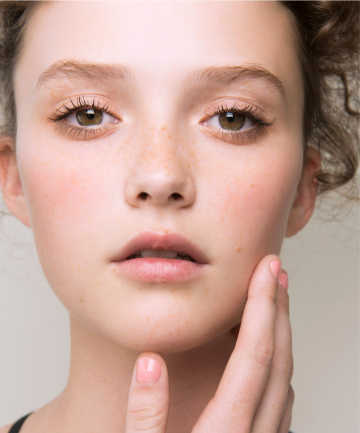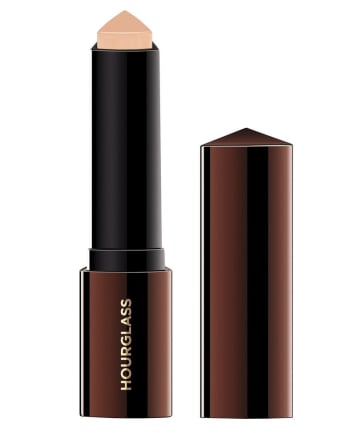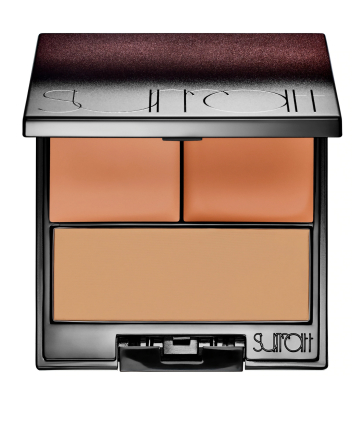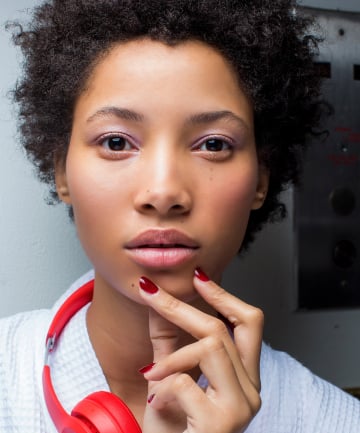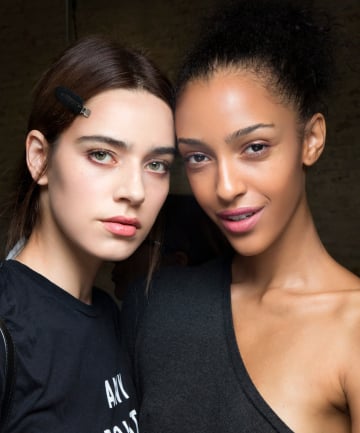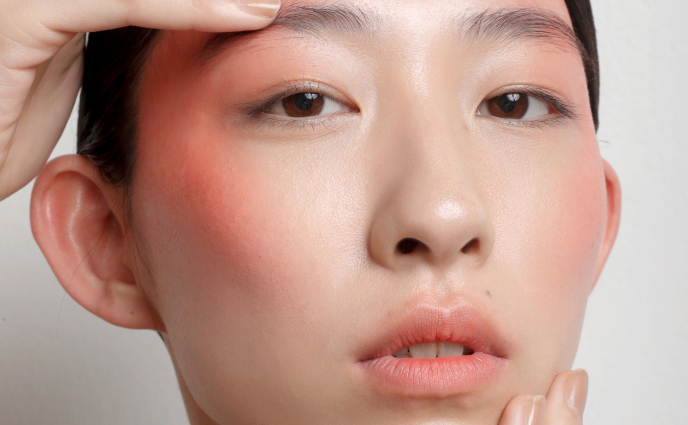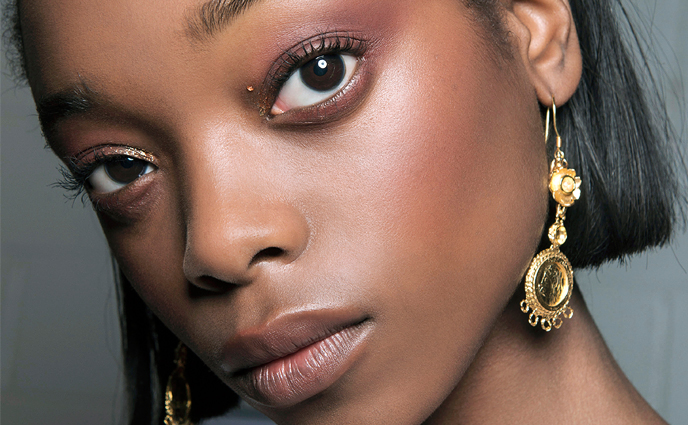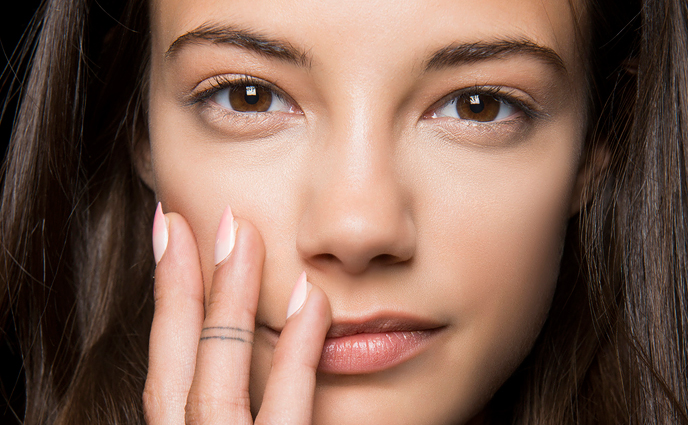Let's get the easy part out of the way: picking the right foundation for your skin type. "Start by identifying if you have oily, dry or combination skin and then determine the finish you want (matte, satin or glowy)," says Glamsquad artistic director, Kelli J. Bartlett. "Lastly, decide what type of coverage you're looking for: full, medium or sheer. From there, it's a foundation equation. For example, if you have oily skin and desire matte, full coverage foundation, pick an oil-free matte full coverage one."
Image via Imaxtree
Image via Imaxtree
Another good tip is to go for a buildable formula such as a foundation stick, which can double as a face concealer. This is especially helpful because most people's forehead is a shade or two darker, buildable coverage allows you to correct for this without needing to layer, for example, bronzer. (One of our stick foundation faves? The Hourglass Vanish Seamless Finish Foundation Stick, $46.)
Buy now
Buy now
"No matter what foundation you opt for, select two shades within your skin tone range so that the darker can serve as your summer shade, while the lighter as your winter shade, and a blend of both for the months in-between," says Terri Bryant, founder of Guide Beauty. From there, she says, it's all about concealer to perfect those tricky areas that need a little more coverage. "The biggest mistake when buying online is choosing one concealer for face and eyes. For dark circles and under eye discoloration, choose a sheer coverage concealer with peachy/orange undertones depending on the depth of your skin tone. For the face, you can rely on a little extra dab of a foundation stick to hit those areas that need a bit more coverage."
You can also find palettes that have a couple shades to choose from, such as the Surratt Perfectionniste Concealer Palette, $58.
Buy now
You can also find palettes that have a couple shades to choose from, such as the Surratt Perfectionniste Concealer Palette, $58.
Buy now
When it comes to skin concerns, usually your foundation and concealer's finish will help most. "For example, if you hate being shiny, then look for a matte finish," says Sephora Collection national makeup artist, Helen Phillips. "Note also that while makeup can always help cover any blemish, it's important to have a good skin care routine as that is really the best way to tackle any underlying skin concerns."
Image via Imaxtree
Image via Imaxtree
Picking the best color is where it gets tricky.
It's important to do your research and try different products that might work for you. "Sephora has a great tool to help with this process — the Foundation Finder Quiz," says Phillips. "It helps guide you to find the perfect match. You'll also need to understand what neutral, cool and warm means; this can be different for each brand. Cool usually means pink undertone, while warm coincides with yellow undertone. It's important to not only reference the image online, but also read the descriptions of the shade. For example, if it's a 'medium with neutral undertone' and you usually consider yourself to be light, I would instead look for a light shade with the neutral undertones."
Once you determine what undertone you're looking for, you can buy a few different colors in a range and try them at home in your own mirror in natural light.
Image via Imaxtree
It's important to do your research and try different products that might work for you. "Sephora has a great tool to help with this process — the Foundation Finder Quiz," says Phillips. "It helps guide you to find the perfect match. You'll also need to understand what neutral, cool and warm means; this can be different for each brand. Cool usually means pink undertone, while warm coincides with yellow undertone. It's important to not only reference the image online, but also read the descriptions of the shade. For example, if it's a 'medium with neutral undertone' and you usually consider yourself to be light, I would instead look for a light shade with the neutral undertones."
Once you determine what undertone you're looking for, you can buy a few different colors in a range and try them at home in your own mirror in natural light.
Image via Imaxtree


